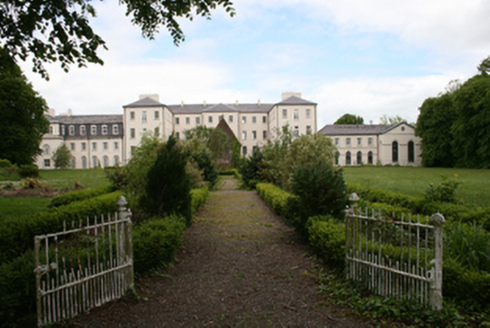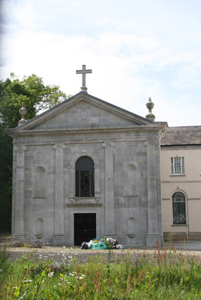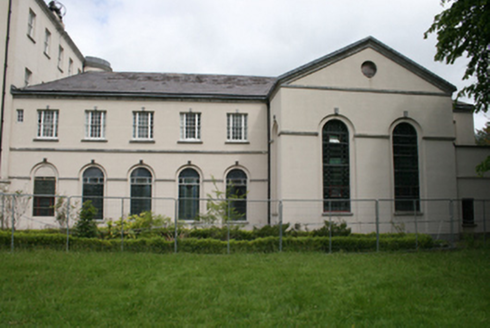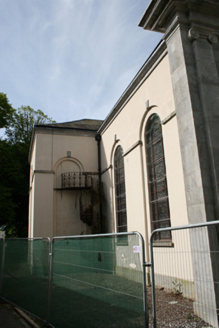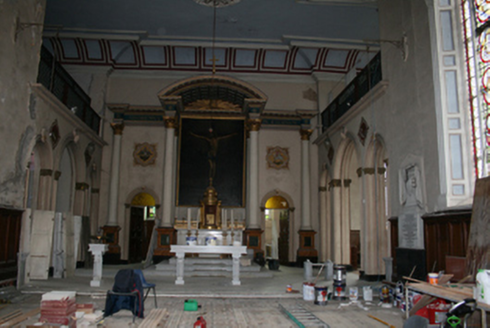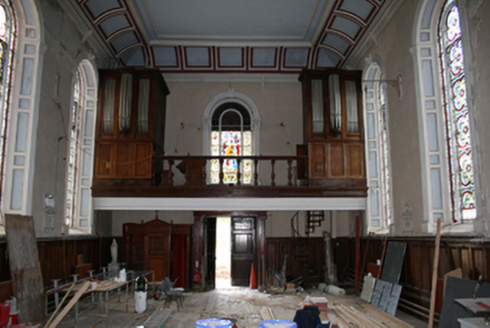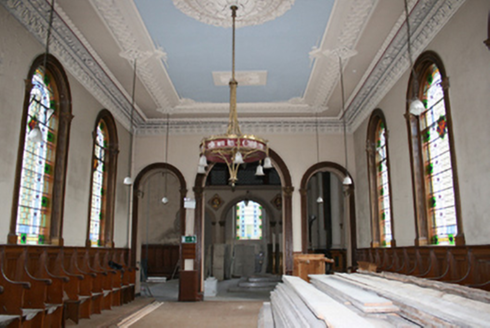Survey Data
Reg No
20868079
Rating
Regional
Categories of Special Interest
Architectural, Artistic, Historical, Social
Previous Name
Blackrock Convent
Original Use
Church/chapel
Date
1820 - 1840
Coordinates
171674, 71466
Date Recorded
18/05/2011
Date Updated
--/--/--
Description
Attached T-plan chapel, built 1824-5, with four-bay double-height nave and single-bay transept to east. Now disused. Pitched slate roof to nave with hipped roof to and cast-iron rainwater goods. Lined-and-ruled smooth rendered walls with stone plinth, string course and cornice. Limestone ashlar walls to pedimented north elevation having Ionic pilasters supporting pediment with recessed panel and roundel, urn finials to ends and limestone cross to apex. Round-headed statue niches with fonts to ground floor and round-headed statue niches with fluted half-domes to first floor level. Smooth rendered south elevation with pediment having louvered roundel to tympanum. Round-headed window openings set in recessed round-headed panels with stone sills, keystones to arches and stained glass windows. Round-headed window opening to north elevation flanked by fluted Ionic pilasters, supported on a pair of console brackets with architrave and keystone above and round-headed stained glass window. Square-headed door opening with limestone architrave and entablature above timber panelled door. Blind recessed panel to north elevation of eastern transept with blocked opening to external ornamental cast-iron spiral stairs. Interior with decorative ceiling, altar to south with Corinthian columns supporting canopy, choir and organ gallery to north with timber balustrade and tiled floor. Attached to east elevation of Ursuline Convent.
Appraisal
The chapel, designed by Presentation brother and architect, Rev Michael Augustine Riordan, is a very fine example neo-classicism in the resurgent Catholic Church. The use of the Ionic order and the severity of the plain façade are associated with both Imperial Rome and Roman Catholicism. The chapel shares in the importance of the Ursuline Convent, having been purpose-built in the early nineteenth century and for its associations with Nano Nagle.
